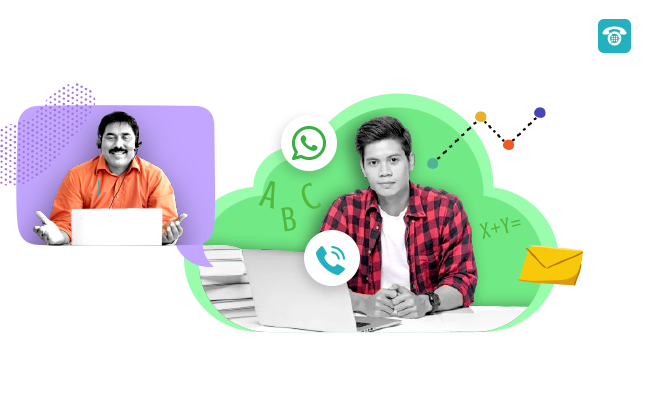The key role of educators in today’s evolving educational environment, which includes implementing Communication Strategies for Education, goes beyond the traditional boundaries of knowledge distribution
A deep connection must be made in order to effectively motivate and inspire students—a connection based on open communication, understanding, and trust.
A transformational strategy that has the potential to revolutionise the educational process is developing strong relationships with students.
At the core of these connections is effective communication, which acts as a potent stimulant for student engagement, motivation, and academic success. When teachers use intentional and compassionate communication strategies for education, they build a supportive and encouraging learning atmosphere where students feel respected, encouraged, and inspired to reach their greatest potential.
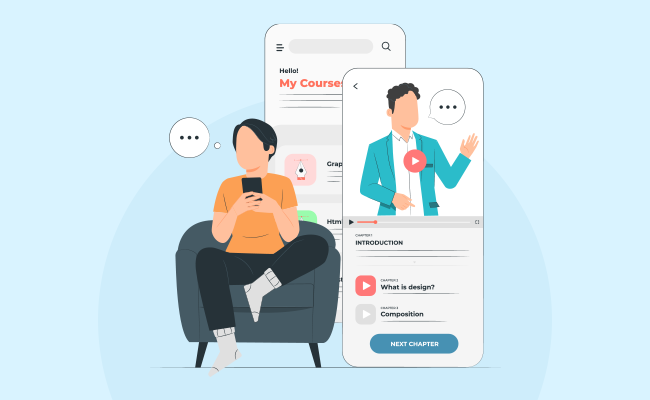
A Gallup survey found that pupils are 3.5 times more likely to succeed academically if they feel involved in the learning process.
The key to improving student engagement is to use communication strategies for education that encourage active participation and specific attention.
Let’s explore 11+ communication tactics that professionals in the education business may employ to establish great interactions with students.
1. Active Listening
Listening correctly is the first step in effective communication. Teachers that pay close attention to their pupils’ thoughts, worries, and ideas demonstrate respect for their viewpoints. Encourage kids to express their ideas freely and to give their viewpoints some thought. This encourages trust and aids in developing a good teacher-student connection.
2. Implement Positive Reinforcement
Recognise and reward kids for their efforts, accomplishments, and progress. Students who receive positive reinforcement feel better about themselves and are more motivated to work hard. It fosters a better learning environment in the classroom where kids feel inspired to succeed by acknowledging even modest successes.
3. Feedback that Runs Both Ways
Communication after receiving feedback should not be one-directional. Encourage students to offer comments on the educational process, the instructors’ approaches, and their experiences in the classroom. Teachers can adapt their approach to accommodate individual requirements and enhance the learning environment by embracing student recommendations.

4. Be Approachable
Fostering great connections with students requires being approachable. Teachers should foster a friendly atmosphere where students feel free to ask questions, express problems, and seek assistance. Students are more likely to participate actively in their studies when teachers are friendly and approachable.
5. Established Expectations
Students should get clear instructions regarding academic requirements, classroom regulations, and behavior expectations. Students feel more in charge of their learning and more confident when they know what is expected of them. Transparent communication reduces confusion and contributes to the development of a favourable learning environment.
6. Incorporate Visual Tools
Slideshows, films, and other multimedia resources make classes more exciting and accessible to students with various learning preferences. Enhancing comprehension and retention through audiovisuals in the classroom ultimately strengthens the relationship between students and teachers.
7. Personalized Communication
You can establish a connection with students by addressing them by name and showing an interest in their individual lives. The use of personalized communication strategies by teachers demonstrates how they view every child as an individual with specific abilities, interests, and concerns.
8. Promote Group Activities
Group projects help pupils develop communication and teamwork abilities. Building a sense of camaraderie through collaborative projects and problem-solving activities fosters social learning.
9. Keep up with Technological Advancements
Adopt contemporary communication methods to effectively maintain contact with students. Whether through innovative solutions like MyOperator’s WhatsApp API chatbot or platforms like Whop’s Discord bot, teachers may more easily exchange updates, reminders, and information with students and parents via business WhatsApp number.

10. Timely Responses
Answer emails, queries, and other communication strategies from students as soon as possible. Timely communication shows that student needs are a top priority, supporting the notion that teachers are approachable and genuinely interested in their academic success.
11. Acknowledge Achievements
Recognize the successes of your students, no matter how great or small. Appreciating their accomplishments gives them more self-confidence and inspiration to keep improving. It does not take much to make students feel valued and appreciated, such as applause, certificates, or compliments in the classroom.
MyOperator Products: Solutions for the Education Industry
1. WhatsApp Chatbot for Admissions
MyOperator’s WhatsApp chatbot streamlines the admissions process by guiding prospective students through various stages.
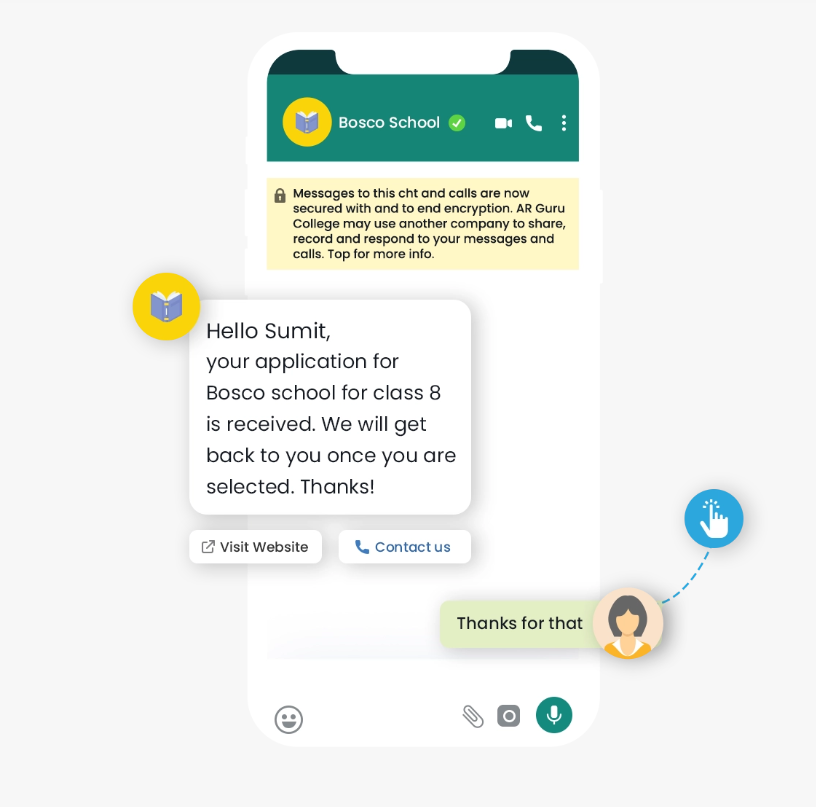
The bot can provide information on available courses, admission requirements, application deadlines, and even answer frequently asked questions. This use case ensures a seamless and informative admission experience for students.
2. Personalized Notifications
Educational institutions can send parents and students individualized notifications using the MyOperator cloud call center features.
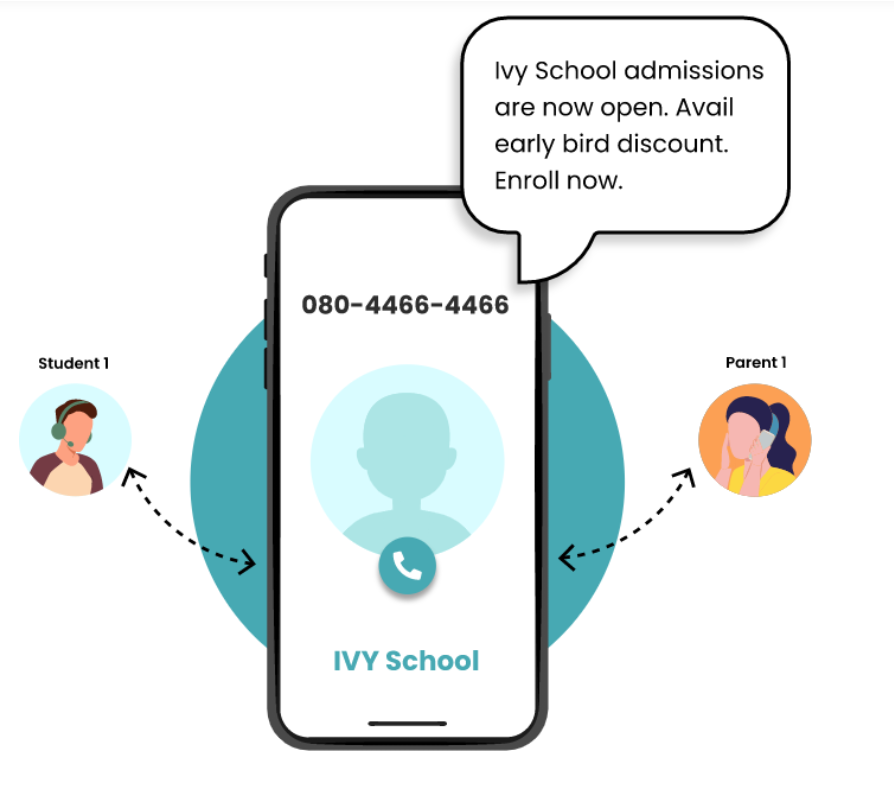
These notifications can advise students and parents of impending activities, reminders about fees, exam schedules, and other crucial information.
3. Cloud-based Recording and Analytics
MyOperator’s cloud-based recording and analytics tool, designed for cloud call center software, provides useful information about call performance and communication patterns.
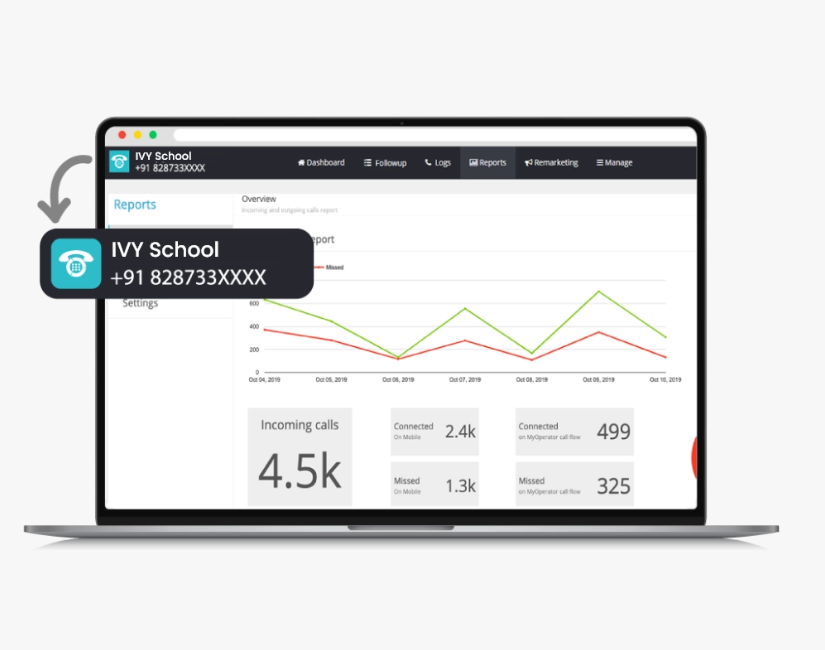
To evaluate the success of their communication methods, educational institutions can examine call statistics such as call frequency, duration, and customer feedback.
Institutions can make well-informed decisions to improve their communication strategies processes with the help of this data-driven strategy.
4. Interactive Voice Response (IVR) System
Any educational institution must have an interactive voice response IVR system since it acts as the first point of contact for students and parents.
The IVR service technology at MyOperator guarantees a customised experience by providing personalised greetings and call routing based on the caller’s inquiry.
With the help of this tool, students can easily access information about their classes, exams, and fees, which improves productivity and cuts down on waiting times.
Bringing to you the best choices for your Institution
Why settle for less when you can have MyOperator?
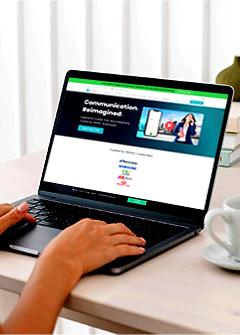
5. 24/7 Assistance
Since education does not operate on the conventional 9–5 schedule, students may require help outside regular business hours.
Students get access to essential information and support whenever they need it because of MyOperator’s 24/7 support. This constant accessibility improves student satisfaction and strengthens their perception of the institution’s dependability.
In summary, MyOperator solutions provide a comprehensive suite of communication automation capabilities that have a substantial positive impact on the education sector.
Educational institutions may establish close bonds with their students by streamlining communication strategies for education procedures, improving responsiveness, and providing students with regular updates.
These solutions enable organizations to develop a caring and encouraging learning environment, thereby enhancing student satisfaction, academic success, and the growth of the education industry as a whole.

